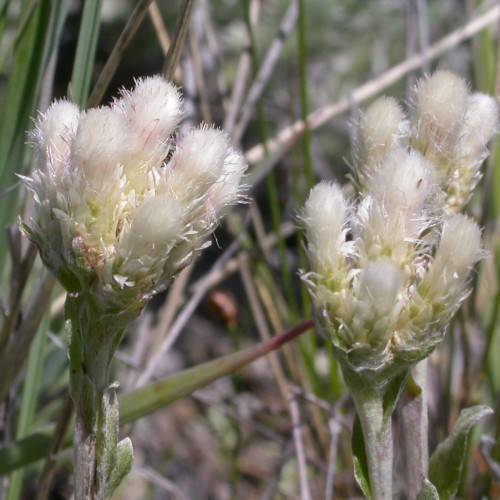
Rosy Pussytoes
Antennaria rosea subsp. confinis
Watering:
Minimal
Hardiness Zone:
Flowers:
Flowers
Sun:
Sun
Leaf:
Yes
Growth Rate:
Low
Drought Tolerant:
Yes
Salt Tolerant:
Yes
Care Level:
Low
watering
Rosy Pussytoes should be watered regularly during the growing period, which is typically from early spring until mid-fall. Depending on soil conditions and weather conditions, water needs can vary but generally, this plant does best when kept lightly moist. If the soil gets too dry, the foliage can turn brown and the plant may even fail to flower. During the hottest summer months, Rosy Pussytoes may need watering once a week, but in cooler months they may need less water. Consider checking the soil moisture of the plant every 3 to 5 days and providing additional water, if necessary.
sunlight
Rosy Pussytoes, an attractive perennial flower, needs plenty of sunlight to thrive. It prefers at least 6 hours of direct sunlight per day during the growing season. In the fall and winter season, however, the plant requires less sunlight, about 4-5 hours of direct sunlight each day. When planting, place rosy pussytoes in a sunny location, but not a location that is too hot during the afternoon as this may cause the plant to become stressed. When growing in containers, make sure to move them to a location that receives more sunlight in the winter.
pruning
When to Prune: Rosy Pussytoes should be pruned in late winter or early spring before new growth begins. Pruning should be done before flowering in late spring to early summer for best results. How Much to Prune: When pruning Rosy Pussytoes, it is important to remember to only prune healthy growth that is not overly large or dense. This will allow the plant to maintain a balanced shape and size. For smaller plants, trim away no more than 1-third of the foliage at any 1 time. For large or dense plants, trim no more than 1-half. Remove any dead, diseased, or damaged stems at any time to promote healthy growth.
